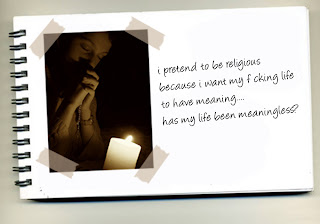Pygmalion adalah seorang pemuda yang berbakat seni memahat. Ia sungguh piawai dalam memahat patung. Karya ukiran tangannya sungguh bagus.Tetapi bukan kecakapannya itu menjadikan ia dikenal dan disenangi teman dan tetangganya. Pygmalion dikenal sebagai orang yang suka berpikiran positif. Ia memandang segala sesuatu dari sudut yang baik.
Apabila lapangan di tengah kota becek, orang-orang mengomel. Tetapi Pygmalion berkata, "Untunglah, lapangan yang lain tidak sebecek ini."
Ketika ada seorang pembeli patung ngotot menawar-nawar harga, kawan-kawan Pygmalion berbisik, "Kikir betul orang itu." Tetapi Pygmalion berkata, "Mungkin orang itu perlu mengeluarkan uang untuk urusan lain yang lebih perlu".
Ketika anak-anak mencuri apel dikebunnya, Pygmalion tidak mengumpat. Ia malah merasa iba, "Kasihan, anak-anak itu kurang mendapat pendidikan dan makanan yang cukup di rumahnya."
Itulah pola pandang Pygmalion. Ia tidak melihat suatu keadaan dari segi buruk, melainkan justru dari segi baik. Ia tidak pernah berpikir buruk tentang orang lain; sebaliknya, ia mencoba membayangkan hal-hal baik dibalik perbuatan buruk orang lain.
Pada suatu hari Pygmalion mengukir sebuah patung wanita dari kayu yang sangat halus. Patung itu berukuran manusia sungguhan. Ketika sudah rampung, patung itu tampak seperti manusia betul. Wajah patung itu tersenyum manis menawan, tubuhnya elok menarik.
Kawan-kawan Pygmalion berkata, "Ah,sebagus-bagusnya patung, itu cuma patung, bukan isterimu."
Tetapi Pygmalion memperlakukan patung itu sebagai manusia betul. Berkali-kali patung itu ditatapnya dan dielusnya.
Para dewa yang ada di Gunung Olympus memperhatikan dan menghargai sikap Pygmalion, lalu mereka memutuskan untuk memberi anugerah kepada Pygmalion, yaitu mengubah patung itu menjadi manusia betul. Begitulah, Pygmalion hidup berbahagia dengan isterinya itu yang konon adalah wanita tercantik di seluruh negeri Yunani.
Nama Pygmalion dikenang hingga kini untuk mengambarkan dampak pola berpikir yang positif. Kalau kita berpikir positif tentang suatu keadaan atau seseorang, seringkali hasilnya betul-betul menjadi positif.
Misalnya:
Jika kita bersikap ramah terhadap seseorang, maka orang itupun akan menjadi ramah terhadap kita.
Jika kita memperlakukan anak kita sebagai anak yang cerdas, akhirnya dia betul-betul menjadi cerdas.
Jika kita yakin bahwa upaya kita akan berhasil, besar sekali kemungkinan upaya dapat merupakan separuh keberhasilan.
Dampak pola berpikir positif itu disebut dampak Pygmalion.
Pikiran kita memang seringkali mempunyai dampak fulfilling prophecy atau ramalan tergenapi, baik positif maupun negatif.
Kalau kita menganggap tetangga kita judes sehingga kita tidak mau bergaul dengan dia, maka akhirnya dia betul-betul menjadi judes.
Kalau kita mencurigai dan menganggap anak kita tidak jujur, akhirnya ia betul-betul menjadi tidak jujur.
Kalau kita sudah putus asa dan merasa tidak sanggup pada awal suatu usaha, besar sekali kemungkinannya kita betul-betul akan gagal.
Pola pikir Pygmalion adalah berpikir, menduga dan berharap hanya yang baik tentang suatu keadaan atau seseorang. Bayangkan, bagaimana besar dampaknya bila kita berpola pikir positif seperti itu. Kita tidak akan berprasangka buruk tentang orang lain.
Kita tidak menggunjingkan desas-desus yang jelek tentang orang lain. Kita tidak menduga-duga yang jahat tentang orang lain.
Kalau kita berpikir buruk tentang orang lain, selalu ada saja bahan untuk menduga hal-hal yang buruk. Jika ada seorang kawan memberi hadiah kepada kita, jelas itu adalah perbuatan baik. Tetapi jika kita berpikir buruk,kita akan menjadi curiga, "Barangkali ia sedang mencoba membujuk," atau kita mengomel, "Ah, hadiahnya cuma barang murah." Yang rugi dari pola pikir seperti itu adalah diri kita sendiri.Kita menjadi mudah curiga. Kita menjadi tidak bahagia.
Sebaliknya, kalau kita berpikir positif, kita akan menikmati hadiah itu dengan rasa gembira dan syukur, "Ia begitu murah hati. Walaupun ia sibuk, ia ingat untuk memberi kepada kita." Warna hidup memang tergantung dari warna kaca mata yang kita pakai.
Kalau kita memakai kaca mata kelabu, segala sesuatu akan tampak kelabu. Hidup menjadi kelabu dan suram. Tetapi kalau kita memakai kaca mata yang terang, segala sesuatu akan tampak cerah. Kaca mata yang berprasangka atau benci akan menjadikan hidup kita penuh rasa curiga dan dendam. Tetapi kaca mata yang damai akan menjadikan hidup kita damai.
Hidup akan menjadi baik kalau kita memandangnya dari segi yang baik. Berpikir baik tentang diri sendiri. Berpikir baik tentang orang lain. Berpikir baik tentang keadaan. Berpikir baik tentang Tuhan.
Dampak berpikir baik seperti itu akan kita rasakan. Keluarga menjadi hangat. Kawan menjadi bisa dipercaya. Tetangga menjadi akrab. Pekerjaan menjadi menyenangkan. Dunia menjadi ramah. Hidup menjadi indah. Seperti Pygmalion, begitulah.
MAKE SURE YOU ARE PYGMALION and the world will be filled with positive people only............how nice!!!!






























